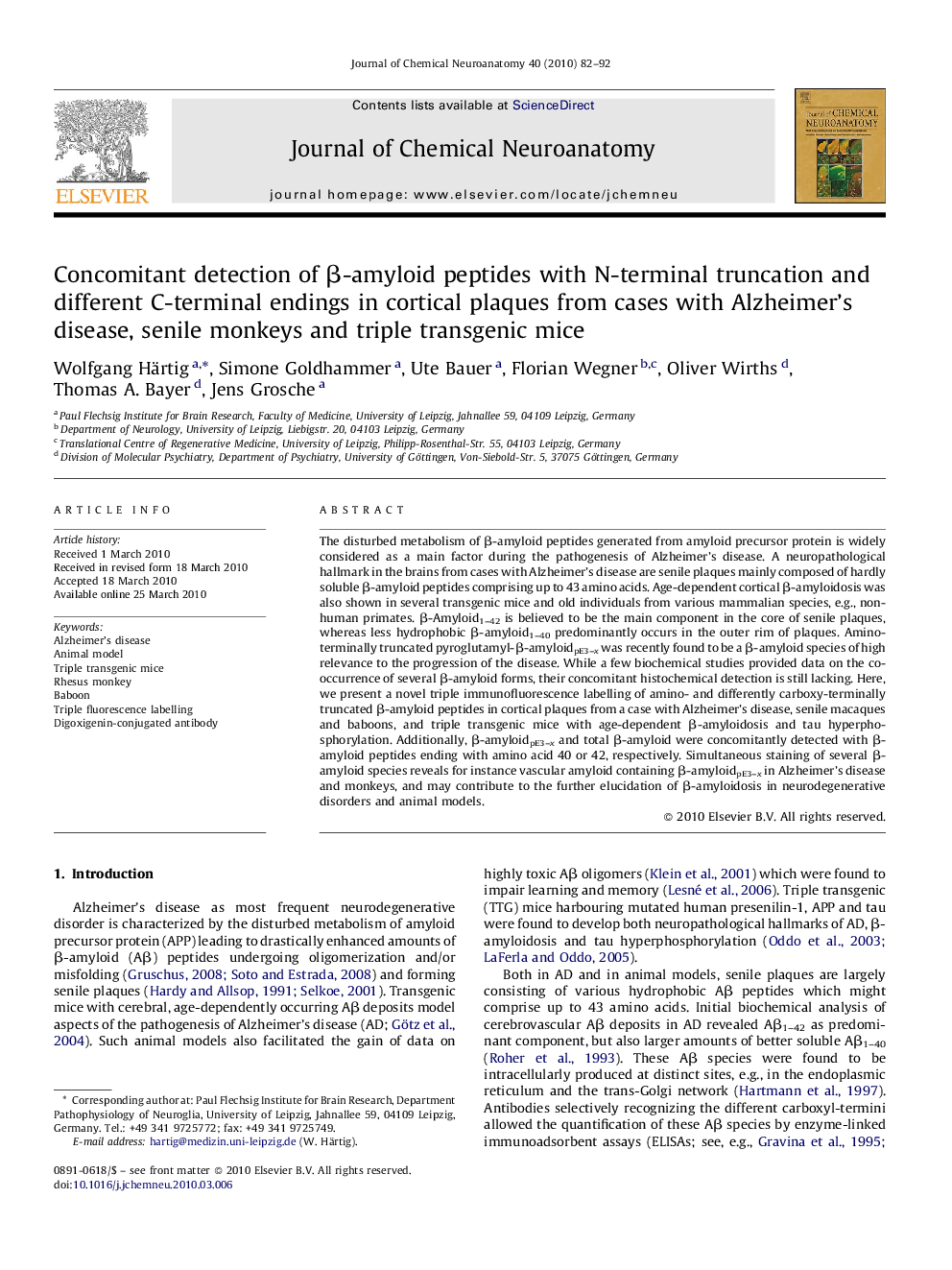| Article ID | Journal | Published Year | Pages | File Type |
|---|---|---|---|---|
| 1989164 | Journal of Chemical Neuroanatomy | 2010 | 11 Pages |
The disturbed metabolism of β-amyloid peptides generated from amyloid precursor protein is widely considered as a main factor during the pathogenesis of Alzheimer's disease. A neuropathological hallmark in the brains from cases with Alzheimer's disease are senile plaques mainly composed of hardly soluble β-amyloid peptides comprising up to 43 amino acids. Age-dependent cortical β-amyloidosis was also shown in several transgenic mice and old individuals from various mammalian species, e.g., non-human primates. β-Amyloid1–42 is believed to be the main component in the core of senile plaques, whereas less hydrophobic β-amyloid1–40 predominantly occurs in the outer rim of plaques. Amino-terminally truncated pyroglutamyl-β-amyloidpE3–x was recently found to be a β-amyloid species of high relevance to the progression of the disease. While a few biochemical studies provided data on the co-occurrence of several β-amyloid forms, their concomitant histochemical detection is still lacking. Here, we present a novel triple immunofluorescence labelling of amino- and differently carboxy-terminally truncated β-amyloid peptides in cortical plaques from a case with Alzheimer's disease, senile macaques and baboons, and triple transgenic mice with age-dependent β-amyloidosis and tau hyperphosphorylation. Additionally, β-amyloidpE3–x and total β-amyloid were concomitantly detected with β-amyloid peptides ending with amino acid 40 or 42, respectively. Simultaneous staining of several β-amyloid species reveals for instance vascular amyloid containing β-amyloidpE3–x in Alzheimer's disease and monkeys, and may contribute to the further elucidation of β-amyloidosis in neurodegenerative disorders and animal models.
